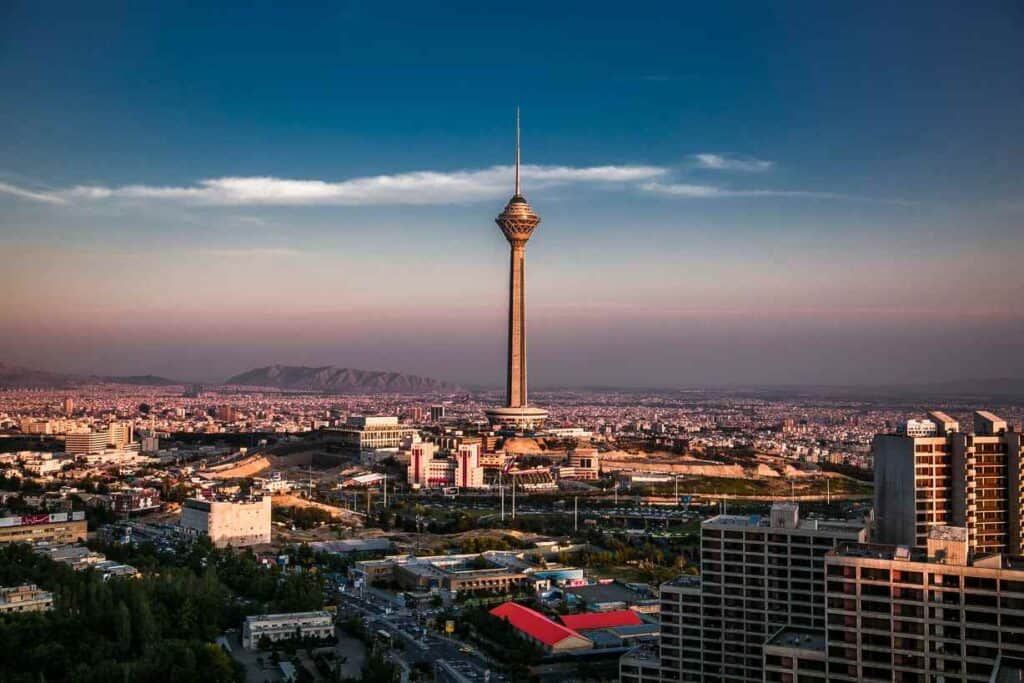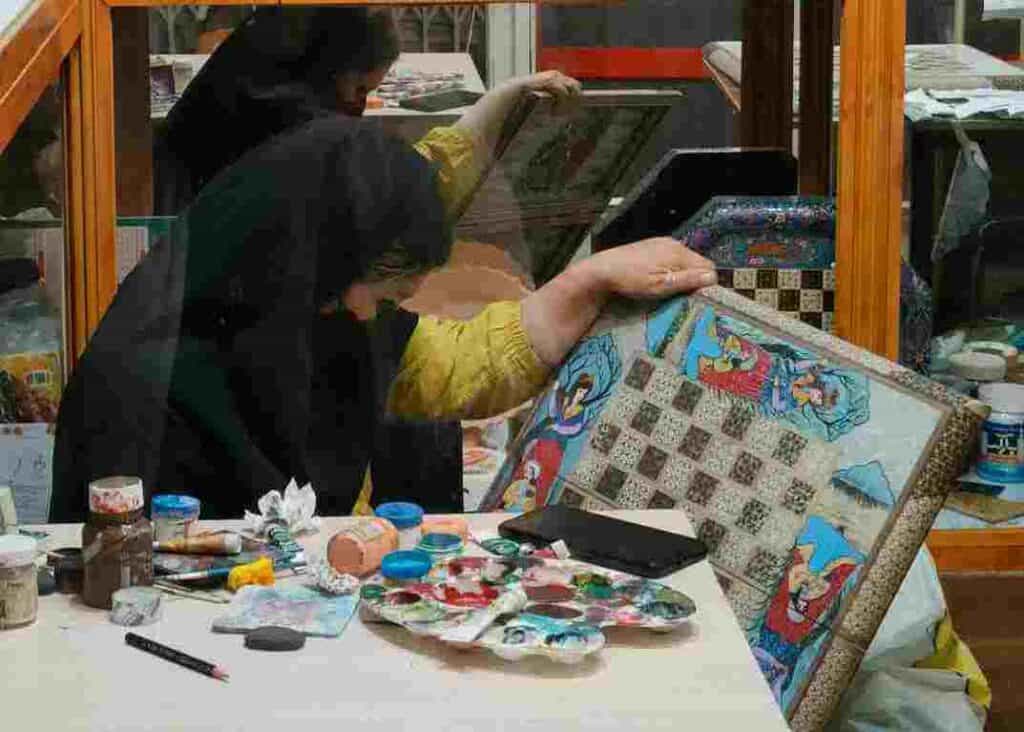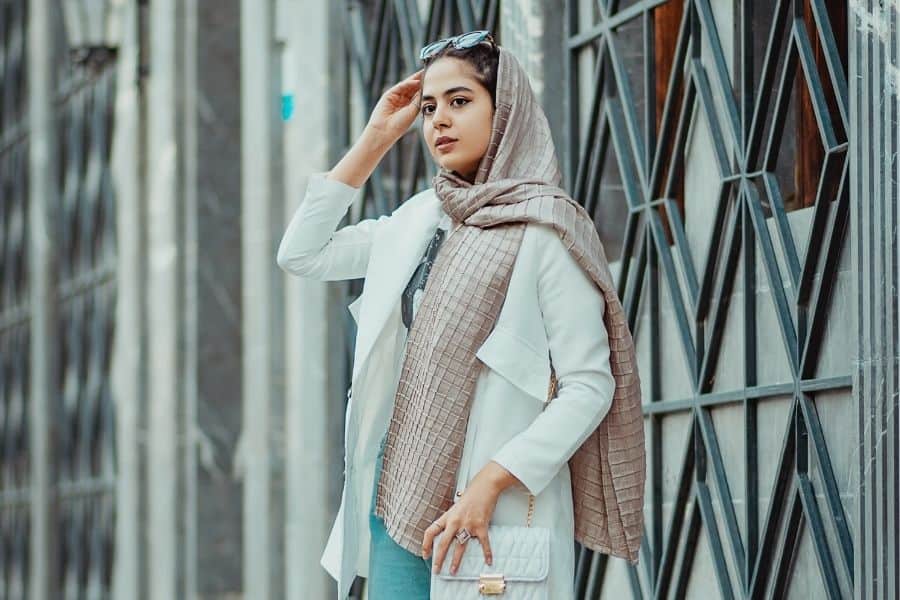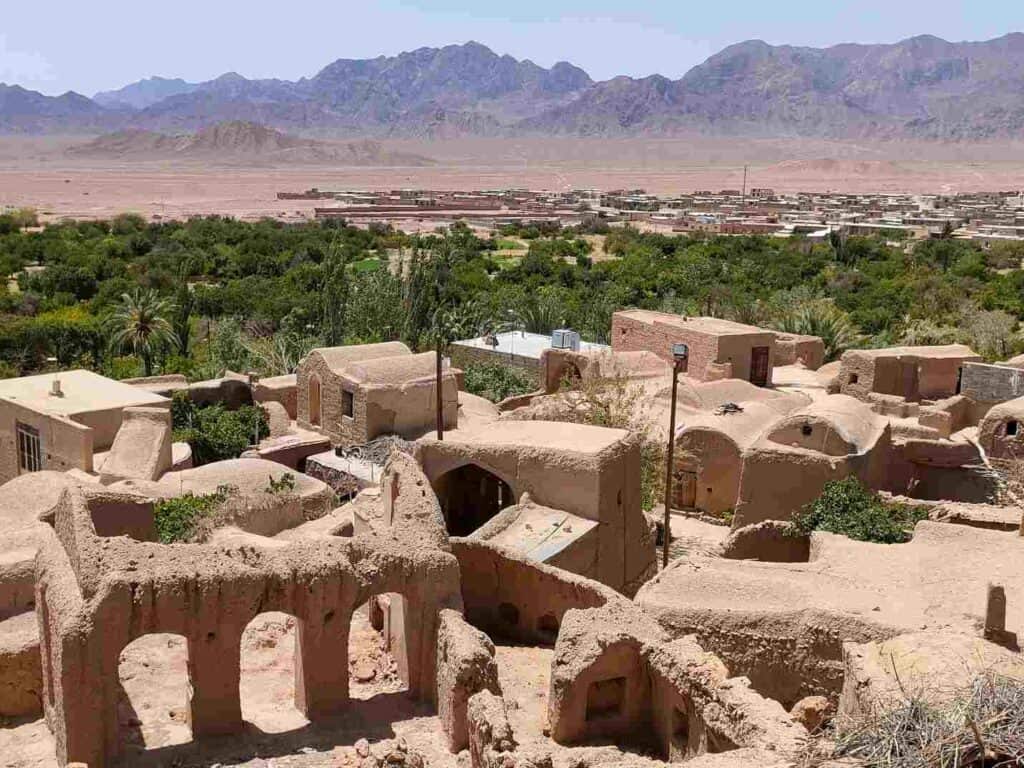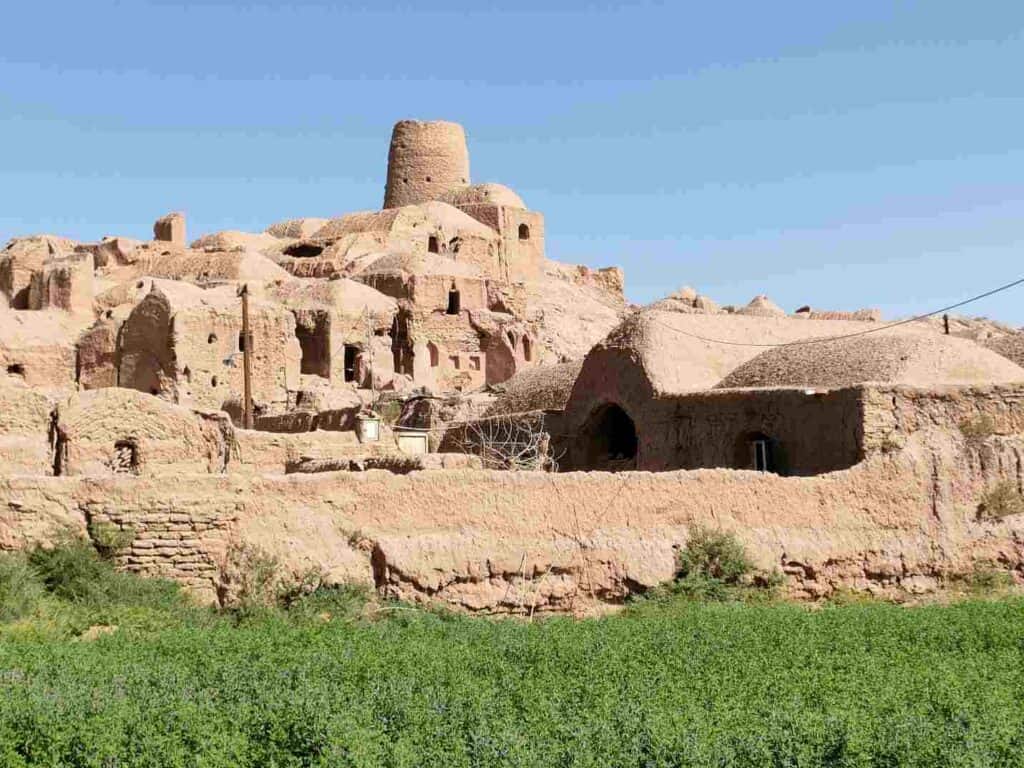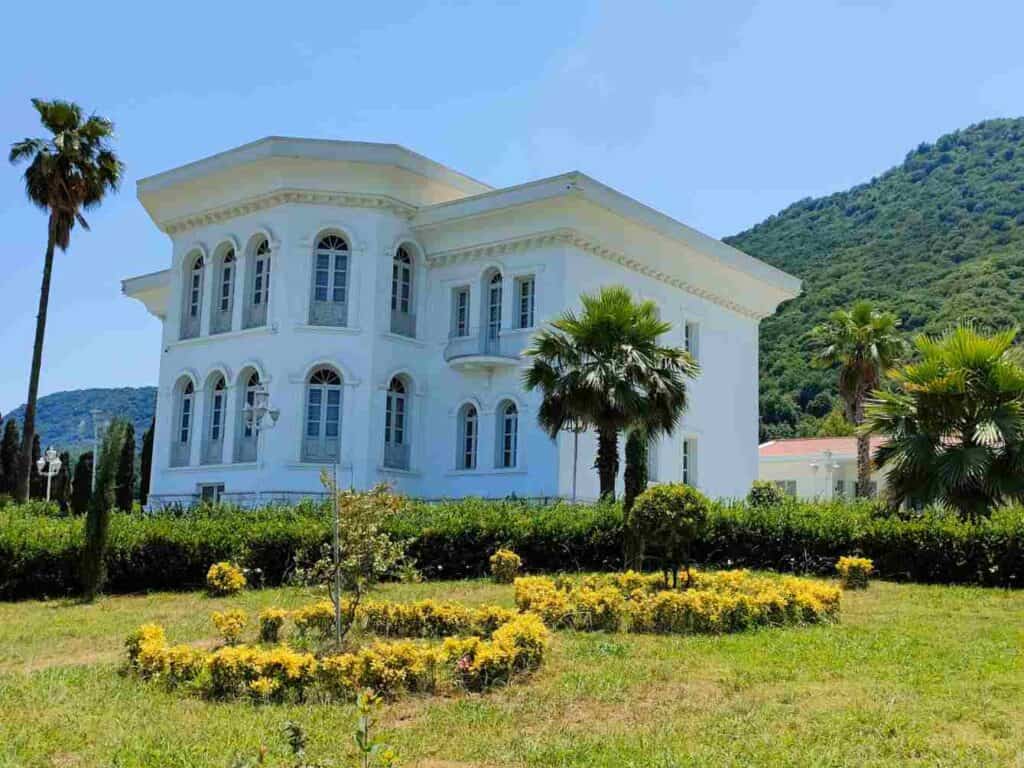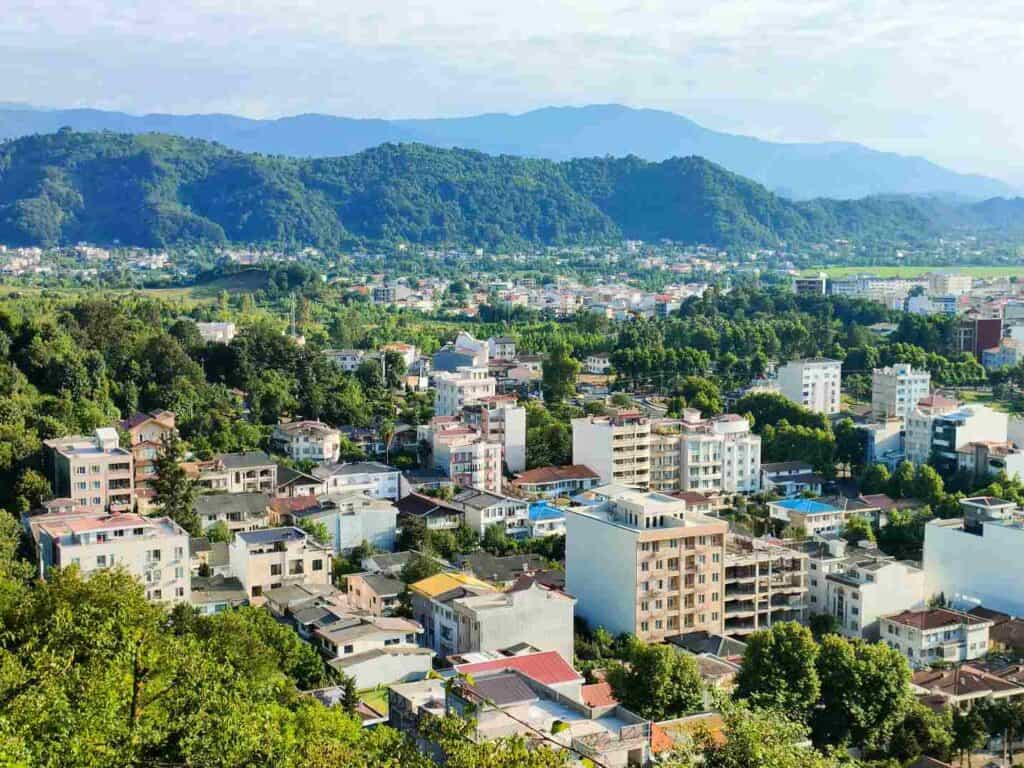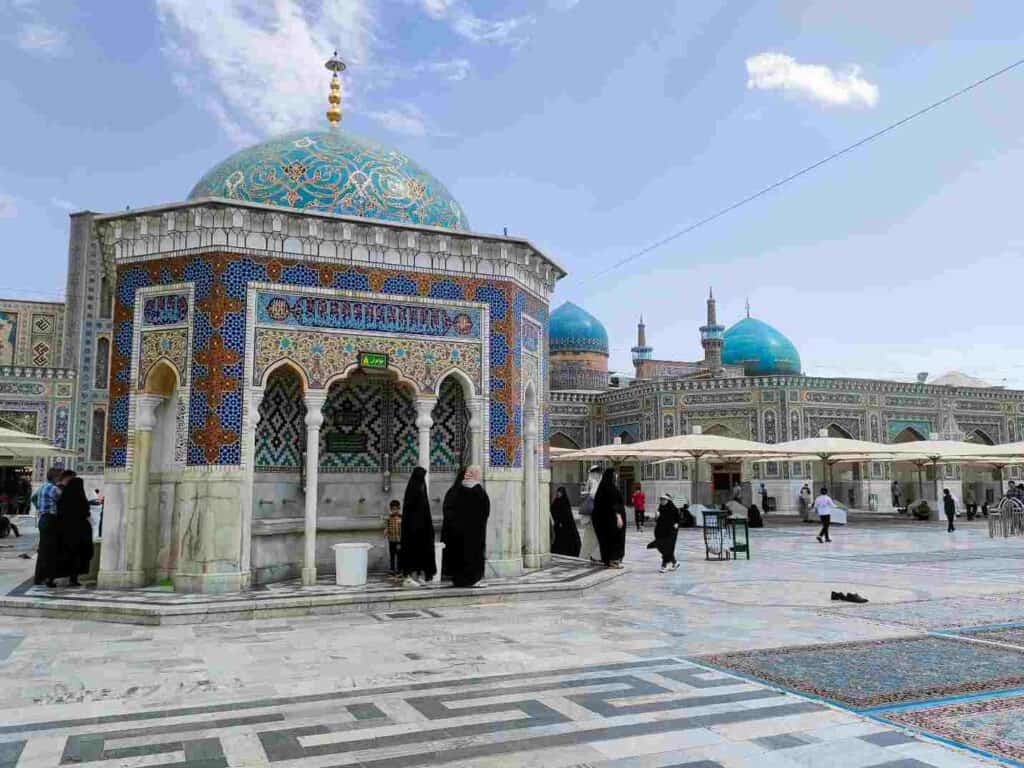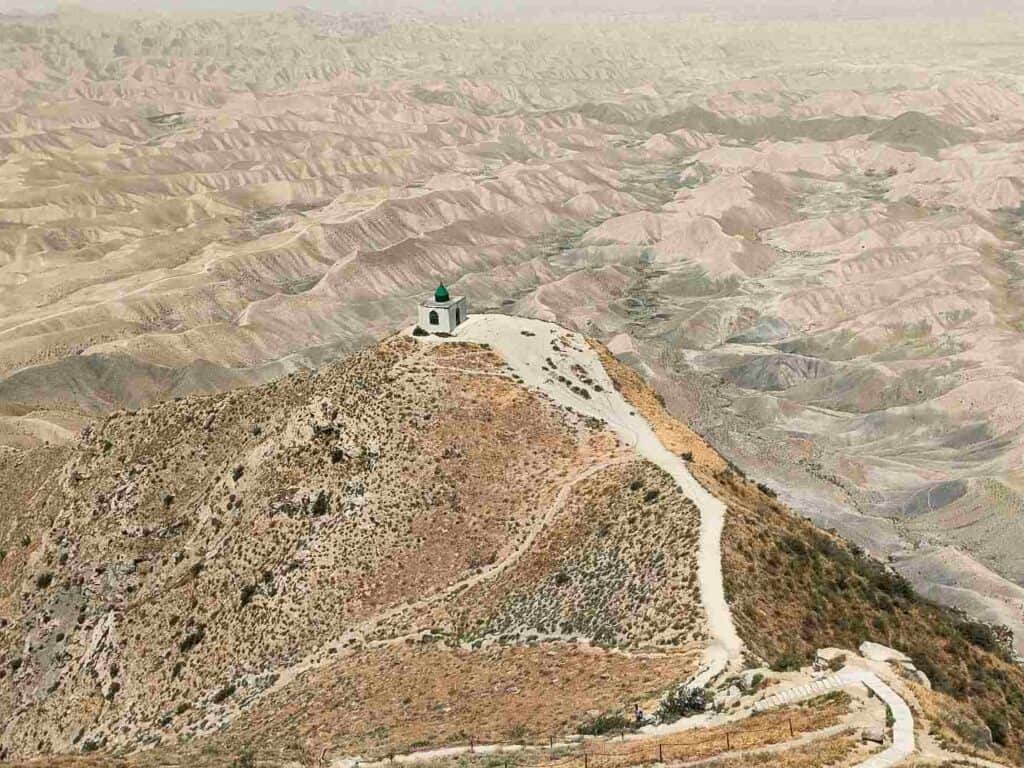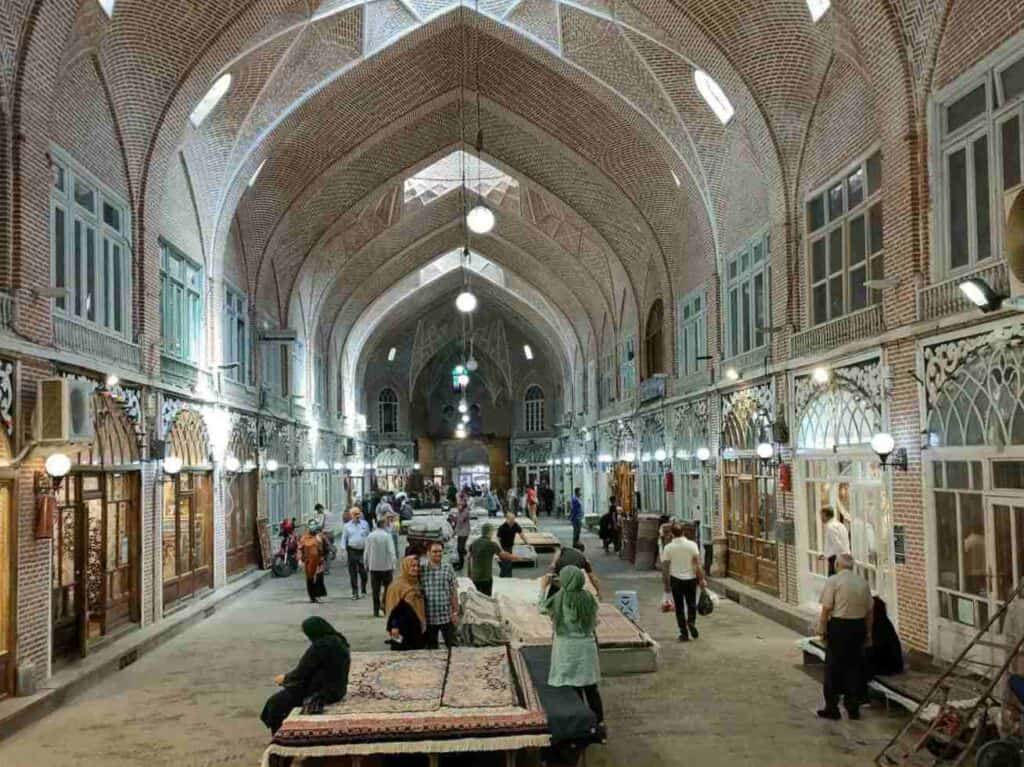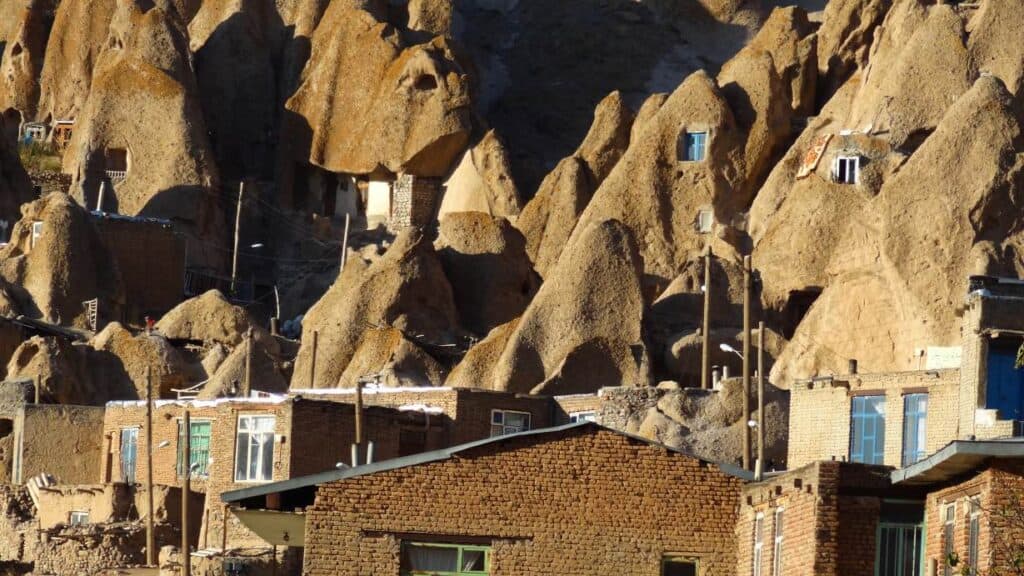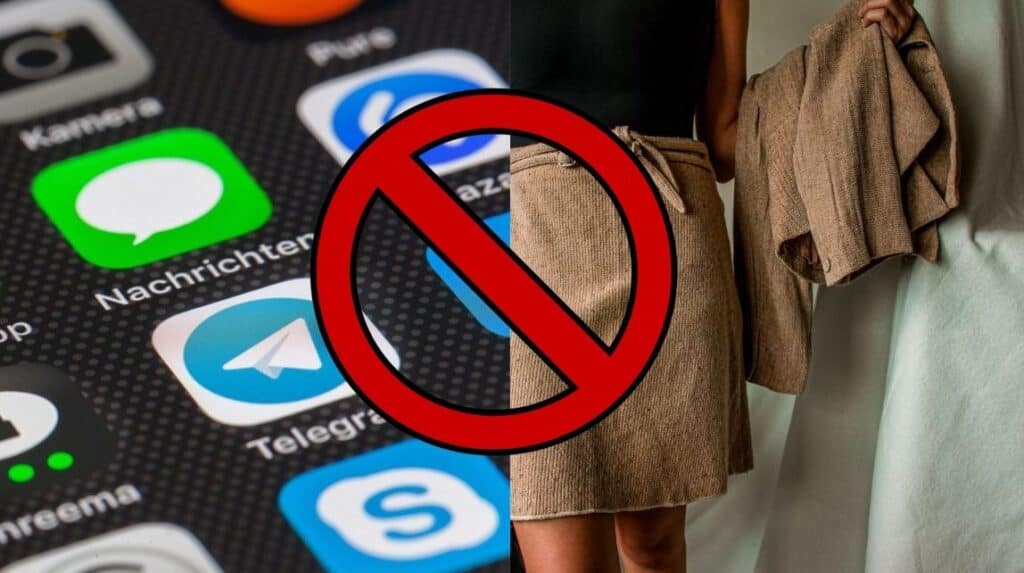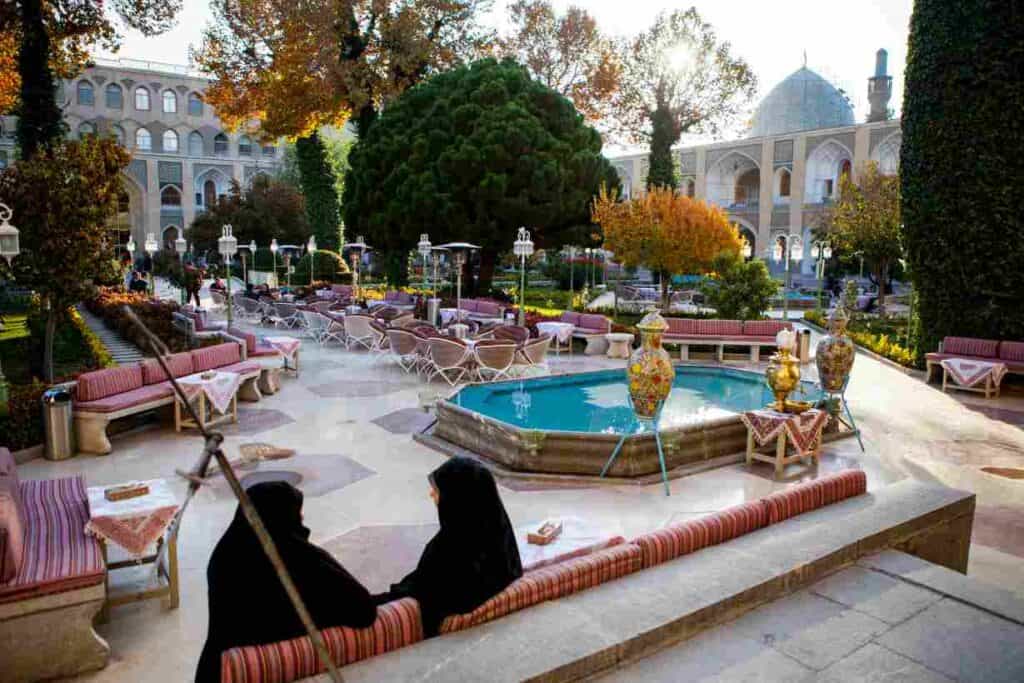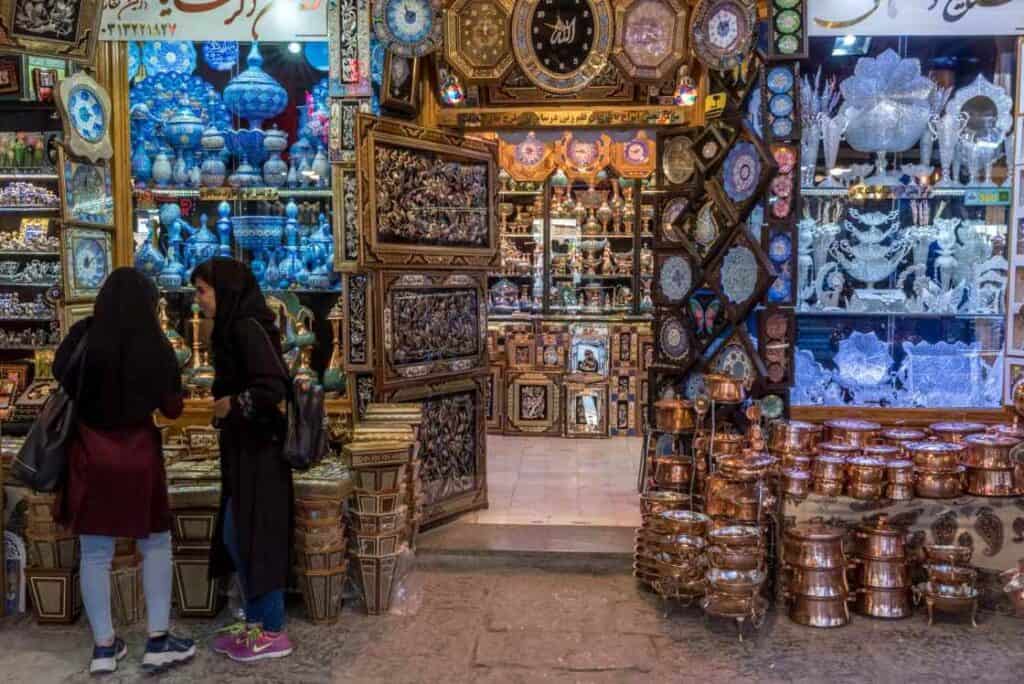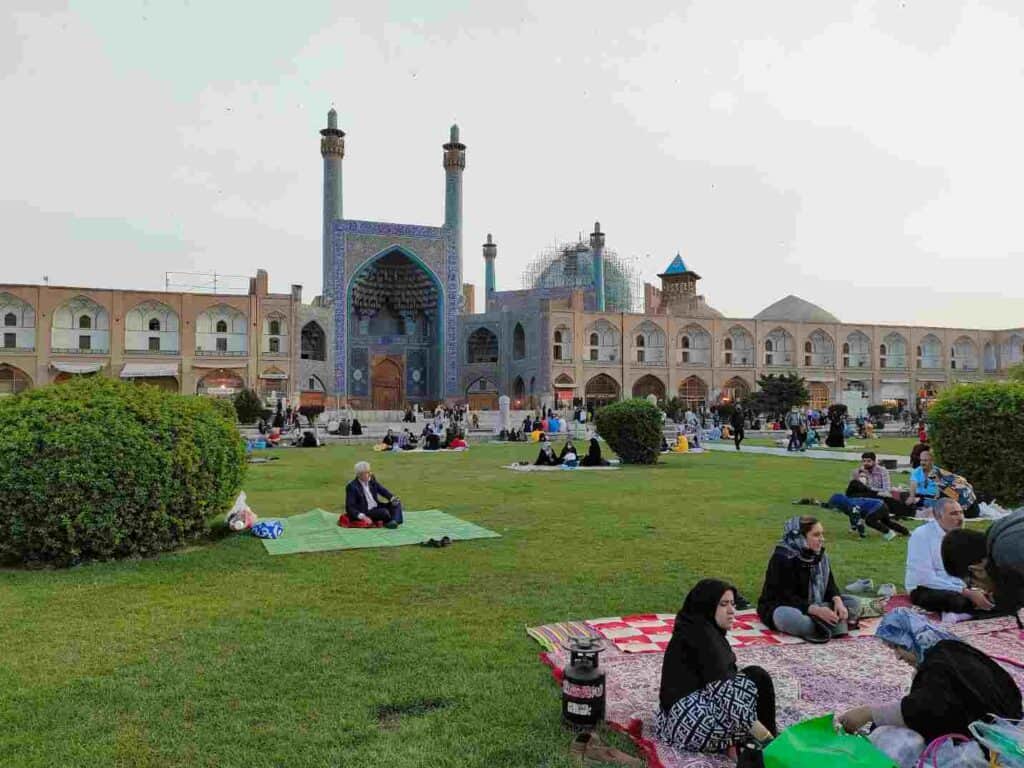This article may contain affiliate / compensated links. For full information, please see our disclaimer here.
Tehran is not only ideal for enjoying parks, restaurants, nightlife and shopping malls, but you can find some of the best museums, palaces, and religious sites in the country. Based on the advice of tour guides here you find an overview of the best places to visit if you have 2 or 3 days in Tehran.
- Suggested two days itinerary about the best places to visit in Tehran
- Suggested three days itinerary about the best places to visit in Tehran
- Royal palaces to visit in Tehran
- The top 9 museums to visit in Tehran
- Religious tourist attractions of Tehran
- How to plan your trip to Iran
- How to plan your trip to Iran
Suggested two days itinerary about the best places to visit in Tehran
Due to the big distances inside Tehran, your program depends on your hotel’s location.
If your hotel is in the city center:
1st day:
- Visit the Golestan Palace Complex (2 palaces)
- Stroll around in the Tehran Grand Bazaar and visit the Shah mosque
- Visit the historical section of the National Museum of Iran
- Visit the Treasury museum (only possible Saturday-Tuesday)
- Take a photo of the Azadi tower
- Go to the Artist Park with galleries, bookshops, and cafés
How to plan your trip to Iran
Book your flight to Iran: I always use Google Flights, Skyscanner or Wayaway to find the cheapest flight tickets worldwide. To get an extra 10% for your Wayaway Membership Plus program use my discount code VOG
Important: Booking.com and other common platforms do not work due to international restrictions in Iran. The only exemption is Skyscanner, where you can book both your international flight and accommodation in Iran!
Book your accommodation in Iran: Hostelworld.com offers a limited number of hostels. All other services are only available through local travel agencies, like 1st Quest.
Get your visa to Iran: 1st Quest or Tap Persia local companies can easily arrange your insurance for Iran
Book domestic flights, hotels, transfers, bus and train tickets, and local tours, all in one place via 1st Quest travel agency.
Another good thing is that by using my discount code, you get an extra 5% off your bookings: VOG%1stQ
Virtual Private Network (VPN): Use VPNExpress, the fastest and best Virtual Private Network to get access to blocked sites in Iran and to prevent hackers from stealing your private information.
Insurance to Iran: 1st Quest or Tap Persia local companies can arrange for you visa to Iran
Book local guides and local tours: Pirsik is specialized in offering tour guides and local tours in less touristic countries, including Iran.
2nd day:
- 13th Aban Museum ( The former US Embassy)
- Saad Abad Palace complex (2 palaces)
- Relax at Darband with cafés and restaurants
- Go shopping or just look around in Tajrish Bazaar
- Imamzadeh Saleh shrine
- Abo-o Atash Park (Water and Fire Park with Tabiat bridge)
Suggested three days itinerary about the best places to visit in Tehran
If the hotel is in the north or you have three days to stay
1st day:
- Golestan Complex (2 palaces)
- Tehran Grand Bazaar (Imamzadeh Zayd and Shah mosque)
- The Gate of National garden
- Iran National treasury Museum
- Take a photo of the Iran National Theater building in the Student Park
- Walk around the famous landmark of the city, the Azadi tower
2nd day:
- Visit the Niaravan Palace, the former residence of the Pahlavi Shah
- Visit the Musical Instrument Museum
- Relax at one of the cafés and restaurants of the Darband area
- Walk around or go shopping in the Tajrish Bazaar
- Visit the Imamzadeh Saleh holy shrine near the Tajrish Bazaar
- Have dinner in one of the great restaurants in Bam-e Tehran
3rd day:
- Visit the shrine of Ayatollah Khomeini
- 13th Aban museum (the former US Embassy) about the hostage crisis
- Relax in the Artists Park with galleries and cafés
- Check out the biggest church of Tehran, the Saint Sarkis Church (and the infamous US graffiti nearby)
- Enjoy the Abo-o Atash Park (Water and Fire Park with Tabiat bridge)
Royal palaces to visit in Tehran
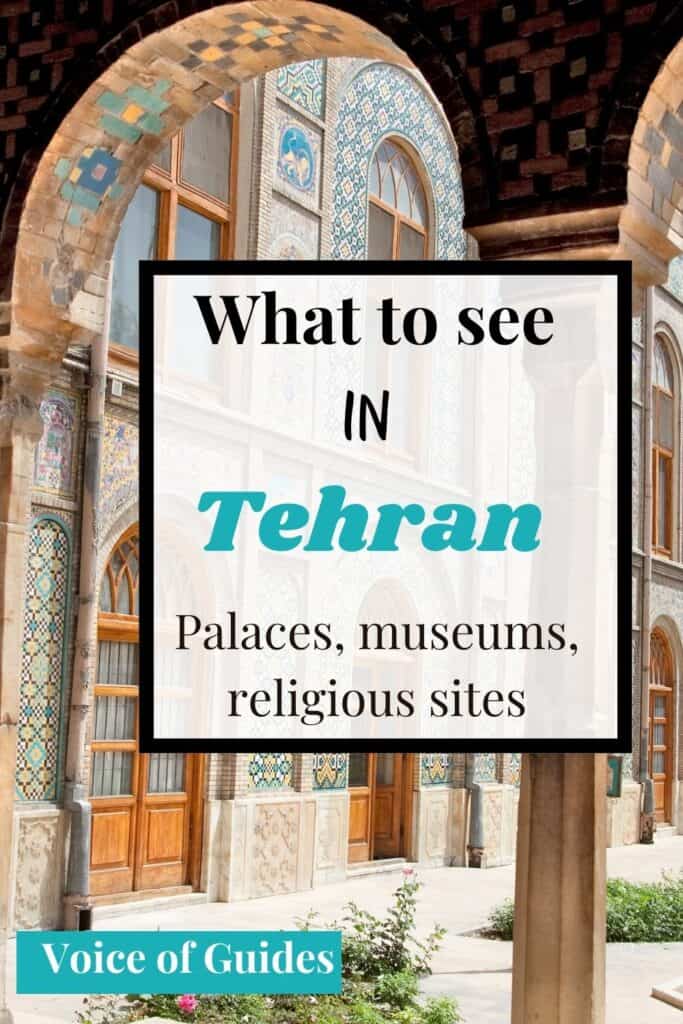
The Golestan palace – One of the places you must visit in Tehran
The Golestan Palace is the most well-known sights in Tehran. It is the former royal palace of the Qajar dynasty rulers and enlisted as a UNESCO World Heritage. Both rulers of the Pahlavi dynasty (Reza Shah 1925-41 and Mohammad Reza Pahlavi 1941-79) were crowned here in the 20th century. Mohammad Reza Pahlavi was also the last Pahlavi ruler deprived of his throne during the 1979 Iranian revolution. He used it only for receptions because he had a new residence built for himself and his family called the Niaravan Palace.
During Pahlavi I, between 1925 and 1941, Reza Shah ordered to demolish a big part of the Golestan complex because he believed that the hundreds of years old Qajar Palace would be an obstacle to modernize the country. But the part that was left intact is impressive with its mirror and diamond hall, reception hall, and marble throne.
Opening hours: 09:00- 18:00 every day
Entrance fee: 500,000 IRR, The main palace fee: 500,000 IRR, entrance to each building is 300,000 IRR.
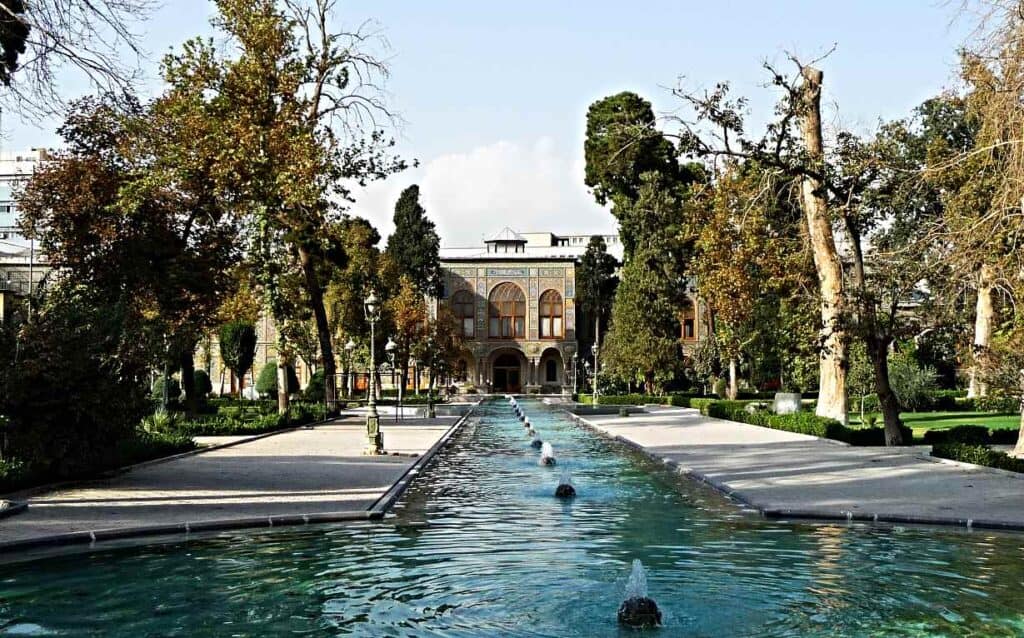
The Niaravan Palace – a great place to get an insight into the life of the last Shah
The Shah’s former palace is open to the public and provides insight into his valuable collection of paintings, carpets and gift collections from various countries and private suites with a library filled with 23.000 books, a private cinema, and an official reception hall.
Opening hours: 09:00- 17:00 every day
Entrance fee: 500,000 IRR, The main palace fee: 500,000 IRR, entrance to each building is 300,000 IRR.
The Sa’dabad Palace complex – Royal mansion from the Pahlavi period
Located in a natural forest, the Sa’dabad Palace complex was built by the Qajar dynasty in the 19th century. Reza Shah of the Pahlavi dynasty continued to live here till the 1920s. Apart from official ceremonies, Mohammad Reza Shah and Queen Farah (the last Pahlavis) used the largest mansion of the complex as a summer residence. There are altogether 18 buildings. The White Palace (Palace of Nations) served as a summer residence during Reza Pahlavi in the 1930s. The Green Palace (Shahvand palace) dates back to the Qajar era, but later on, Shah Reza used it as a residence for his guests and a place for receptions.
Opening hours: 09:00- 17:00 every day
Entrance fee for the complex: 500,000 IRR, Entrance to The White Palace also called Mellat Palace and Green Palace: 300,000 IRR each
Important: The opening hours are shorter in the second half of the solar calendar (September- March).
The top 9 museums to visit in Tehran
1. The National Jewelry Treasury – the most impressive museum of Tehran – Pay attention to the opening hours!
The National Jewelry Treasury is one of the largest diamonds and jewelry collections in the world. Here, the royal treasures began to be accumulated by the Safavid rulers from the 16th century, and the Qajar and Pahlavi rulers expanded them. By the 1930s, the collection represented such a value that it was transported to the National Bank of Iran and served to back up the Iranian currency.
Also read: the ultimate guide about the best things to do in Tehran (Azadi tower, nightlife, parks, bazaars)
Part of the twisted history of the collection is that in 1722 an Afghan ruler looted the treasury and sent it to India. Later, the Persian ruler, Nadir Shah forcibly took back from the Indian Mughal ruler, Mohamad, the 182-carat pink Darya-ye Nur diamond, which is the largest uncut diamond in the world. The world’s oldest Koh-i-Noor diamond was also part of his prey but ended up among the British crown jewels.
In addition to the Sun throne of the monarch Fath Ali decorated with nearly 27,000 gems, the 34kg “Globe of Jewelry” inlaid with 50 000 gemstones and other ornaments are all priceless and the highlights of the National Jewelry Treasury.
Opening hours: Saturday – Tuesday 14:00- 17:00, closed on Wednesday, Thursday and Friday.
If you can manage your time to be in Tehran during the days when the museum is open it is one of the places you must visit in Tehran.
Entrance fee: 500,000 IRR
Check the website of the National Bank to know more about the precious collection
2. The National Museum of Iran – An overview of Iranian history
The National Museum is the mother of all museums in Iran. It has two separate buildings. The first building displays the pre-historic period (from 250,000 years to 5,500 years ago) and the historical period until the arrival of the Islam religion (from 5,500 years ago to 1,440 years ago) on two floors. The second building manifests artifacts from the Islamic to the contemporary period.
Opening hours: 09:00- 19:00 every day (Fall and winter), 08:30- 17:00 (Spring and summer)
Entrance fee for the National Museum of Iran (Iran Bastan Museum): 1,000,000 INR
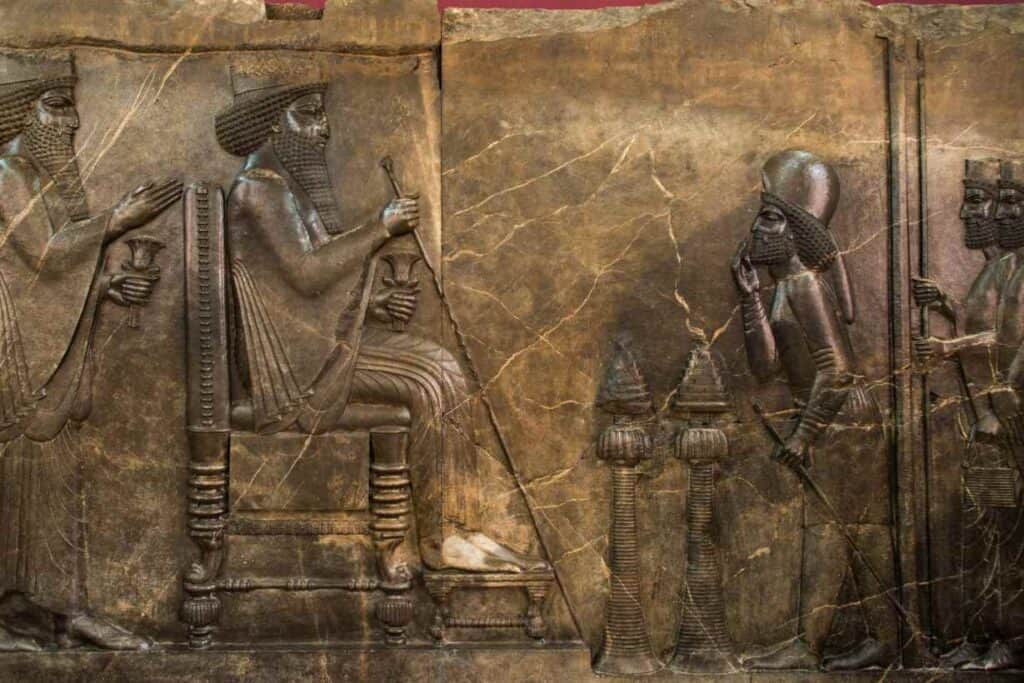
3. The strangest museum of Tehran: the US DEN of Espionage (13th Aban museum)
Opened only two years ago, the 13th of Aban Museum is the most peculiar museum in Tehran that conveys an anti-American message. The former infamous anti-American graffiti of the surrounding wall with the skulled liberty statue is familiar to most of us. Lately, they repainted the walls with similar anti-US and anti-Israel images. The former US embassy displays the original rooms and equipment from the time of the Islamic Revolution. It is one of the most interesting places to visit in Tehran.
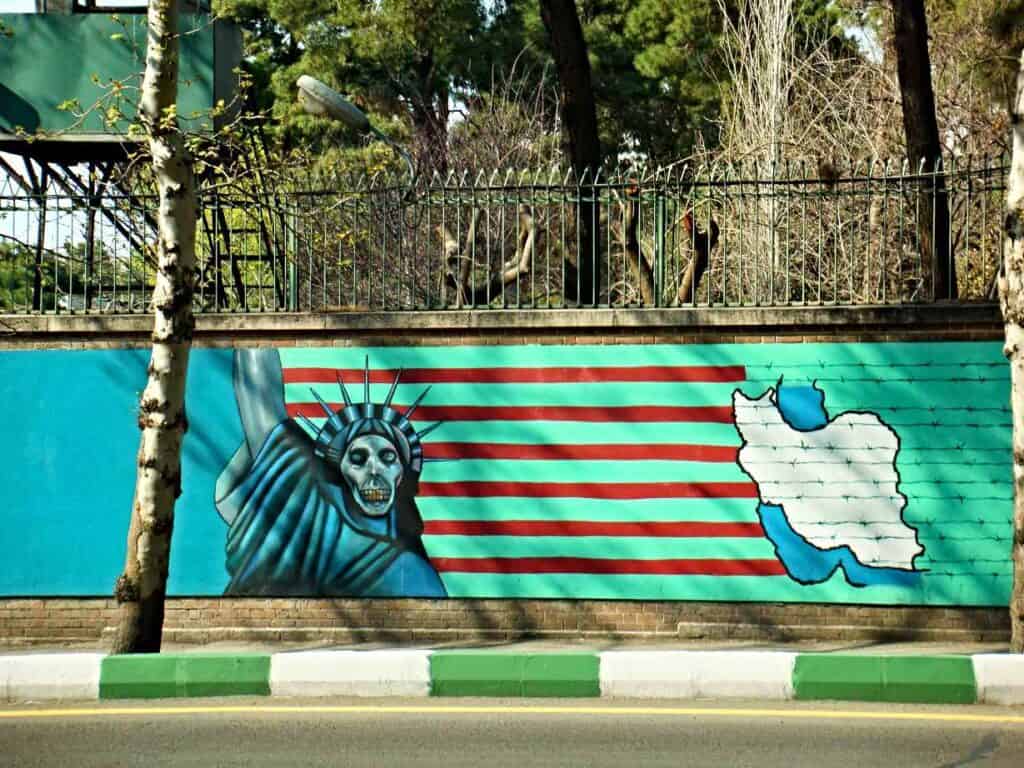
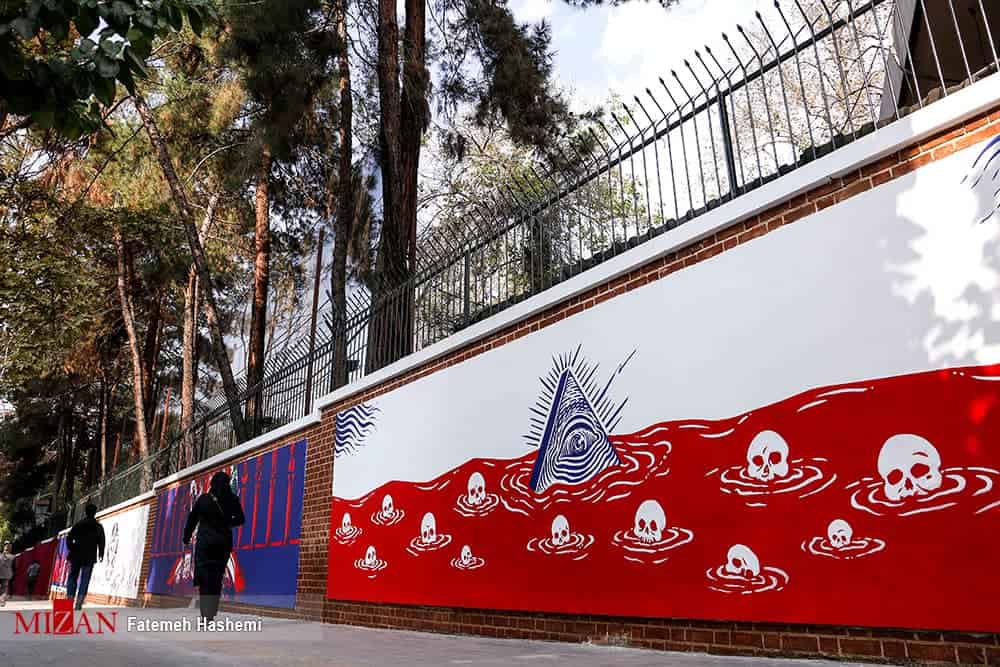
On 4th November (13th of Aban) in 1979, a group of outraged radical Islamic students occupied and attacked the embassy and took 65 diplomats hostage. They released 13 of them after 16 days and kept 52 diplomats for 444 days inside the building. A crucial moment that irreversibly poisoned the relationship between Iran and the USA.
It was the time of the Islamic Revolution. The Iranian people marched to the streets to protest against the autocratic reign of Mohammad Reza Pahlavi Shah. The monarch pushed the country into a futureless situation by signing irrationally disadvantageous military contracts with his big alliance, the United States of America.
The Iranian people overthrew the monarchy and the Shah, who had no choice but to flee the country with his family on 16th January 1979.
Ruhollah Khomeini, the religious leader, who gained worldwide sympathy, returned from his exile on 1st February, the same year. In sharp contrast to the Shah’s lavishing lifestyle, the modestly dressed mullah (Muslim priest) appeared as the Savior for the Iranian people.
According to the new constitution, the new form of state of Iran became the Islamic Republic. The leaders of the new regime enforced strict behavioral and clothing rules. It came as a surprise for most of them.
The students overrun the embassy right after President Carter agreed to provide urgent medical treatment for the Pahlavi Shah, considering their long-lasting friendship. The students answered by attacking the embassy and demanded the US to hand over the Shah to Iran for judgment. Khomeini gave his support.
When the embassy employees realized that the security has no chance to stop the outraged youth, they desperately started to annihilate the confidential documents with shredders.
The hostage-takers struggled to reconstruct the documents from the small pieces released by the shredders in the Azadi stadium. The purpose was to reveal the role of the United States in destroying and exploiting the country.
After 444 days, in return for unfreezing the previously blocked Iranian bank deposits, the hostages were released on 20th January 1980.
Book a local tour in Tehran to have a better understanding of this controversial country
Old typewriters, secluded interrogation rooms, safe chambers sealed with security iron doors, and shredders to annihilate confidential documents are the most peculiar object displayed in the museum.
The museum does not interpret the hostage case as a shameful deed. Rather, it is justified as a rightful reaction to the American interference in the Iranian people’s life. And this goes back to a much earlier period. In 1953, when the CIA removed the democratically elected former Prime Minister Mohammad Mossadegh from his post. He was a thorn in their eyes for demanding the nationalization of the local oil industry. The Iranian could never really forget that.
The United States has not reopened an embassy since then in Tehran. The Embassy of Switzerland represents the government of the United States of America in Iran.
Tip: Read the book or watch the Hollywood movie “Argo” with Ben Affleck about the incredible true story of how the CIA agent managed to rescue the American diplomats hiding in Tehran during the hostage crisis with a creative cover story.
Opening hours: Saturday-Thursday 08:00 – 17:30
Entrance fee: 200,000 IRR
4. The Carpet Museum – beautiful Persian carpets from all over Iran
The museum is already unique for its shape that resembles a loom for weaving carpets. It has a large collection of hundreds of years old hand-woven carpets from the famous weaving centers of Tehran: Tabriz, Isfahan, Nain, Kashan, Kerman, Mashhad, etc.
Opening hours: 09:00-18:00 Tuesday-Sunday, closed on Monday
Entrance fee: 300,000 IRR
5. The Museum of Persian Music
This relatively new project from 2009 is a surprise. The Museum of Persian Music has a collection of ancient and contemporary Iranian instruments. It is one of the best museums in the capital, close to the Tajrish Bazaar.
With the audio guide system, you can listen to traditional Persian music at the same time.
Opening hours: Every day except Saturdays, 09:00 – 17:00
Entrance fee: 500,000 IRR
6. The Glassware and Ceramic Museum of Iran (Abgineh Museum)
Pottery has a history of thousands of years in Iran. The making of glass dates back to BC. An impressive historical building close to the National Museum of Iran, in the 30th Tir Street, houses the museum. It served as the residence and working office of the Prime Minister of the Qajar era before being converted into the Egyptian embassy. Finally, the last queen of Iran, Farah Pahlavi used it as her office. After the 1979 Islamic Revolution, the building became a museum of pottery and glass.
Opening hours: Every day 08:00 – 16:30
Entrance fee: 300,000 IRR
7. The Cinema Museum
Another remarkable museum in Tehran is the Film Museum. This museum is located in the north of Tehran in a palace from the Qajar-era. The purpose was to preserve the heritage of the internationally known Iranian cinema. There is a working cinema inside, where they show some classic and modern Iranian films at 1 pm, 3 pm, 5 pm, 7 pm and 9 pm daily. However, if you do not speak any Farsi, you will be lost as these films are generally not subtitled.
There are several good cafés In the courtyard of the museum.
Opening hours: From Sunday to Thursday 09:00- 18:00, Friday: 14:00-19:00, closed on Saturday
Entrance fee: 200,000 IRR
8. The Museum of Contemporary Art of Tehran
The extraordinary architecture of the museum follows the shape of Iranian wind-towers. Paintings from Claude Monet, Vincent van Gogh, Pablo Picasso, and many more form part of the permanent exhibition.
Opening hours: Saturday- Wednesday 08:00- 17:00, Thursday: 08:00-12:00, closed on Friday
Entrance fee: 200,000 IRR
9. The Reza Abbasi Museum
It is more a complex cultural center, where artifacts made of baked clay, metal and stone from the pre-historic times and other metal objects, textile, calligraphy, and paintings from the Islamic period are displayed. As one of the richest historical museums, it is also called “the little National Museum of Iran”. The museum offers training courses, such as Drawing, Calligraphy, Watercolor and Oil painting.
Opening hours: 09:00 – 19:00 every day
Entrance fee: 300,000 IRR
Religious tourist attractions of Tehran
Tehran Jame Mosque or Imam Mosque (former Shah Mosque)
The oldest mosque in Tehran is located on the north side of the Tehran Grand Bazaar and dates back to the Qajar period.
Opening hours: From morning call to prayer until the end of the after sunset prayer
Entrance Fee: free of cost
The Grand Mosalla mosque (Imam Khomeini Mosalla) – the most splendid place in Tehran that is unfortunately not open for visitors
This mosque is so huge that it occupies the distance of two metro stations. They exclusively use it for Friday prayers and congregations. The adjacent exhibition center gives home to reputed festivals like the International Book Fair.
Only Muslims can attend the mosque during Friday prayers.
Imamzadeh Saleh and Imamzadeh Zeid
An Imamzadeh is the shrine of an Imam’s family members who are also honored in Shia Islam.
Imamzadeh Saleh is a popular Shiite pilgrimage site decorated with blue tiles next to the Tajrish bazaar. It is the tomb of one of the brothers of the eighth Shiites Imam. The last king of the Zand dynasty is buried in the corner of this shrine. It is definitely one of the places you should include in your itinerary when you visit Tajrish Bazaar in the north of Tehran.
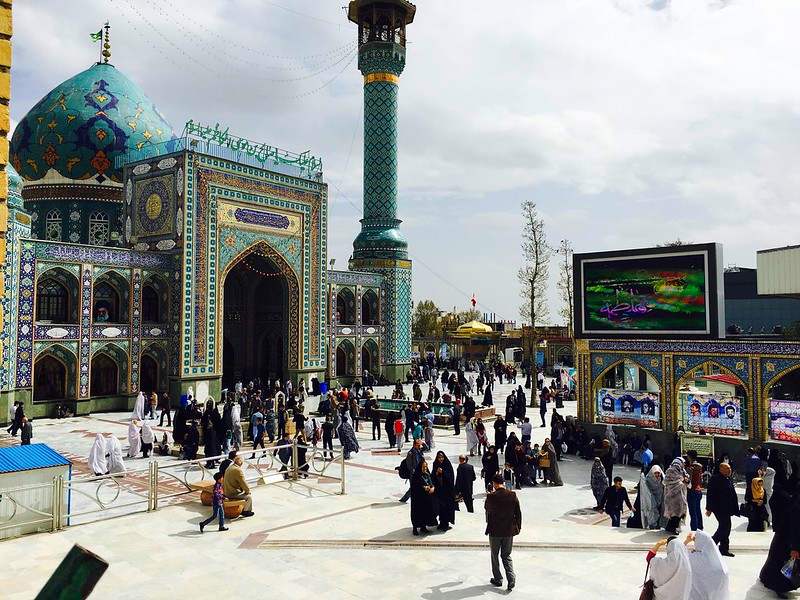
Tourists must follow the dressing rules to get to these places. Women must use a chador (a long fabric that covers the whole body) to enter the yard and shrine. At the entrance to the courtyard, women can borrow chadors for free. To enter the shrine, you have to take off your shoes, put them into a bag, and take them with you.
Indoor photography is prohibited sometimes. Women and men enter through separate entrances, so it is a good idea to fix a time and place to meet after the visit.
Entrance fee: free
Opening hours: Always open
The shrine of Ayatollah Khomeini (the first Supreme Leader of the Islamic Republic of Iran)
The monumental shrine stands in the south of Tehran, between Tehran and the Imam Khomeini International Airport. It is not a simple shrine. The tomb and the surrounding area cover more than six hectares. It is one of the notable monuments of Tehran but it is up to you to decide whether you find it ethical to visit the tomb of the Supreme Leader, who imposed radical Islamic rules on the population.
They have spent more than $7 billion on the construction and reconstruction so far, according to unofficial reports. The government estimated it at $2 billion. A large dome seen far from the highway dominates the tomb with four minarets, each 91 meters high (equivalent to the age of Ayatollah Khomeini at the time of his death), covered with fifty kilos of pure gold and four blue domes. A hotel, a hospital, a religious school, and shops are part of the complex. People from all over Iran and some other Muslim countries come to pay their respects at his shrine.
You can easily reach the complex by subway from inside the city of Tehran.
Opening hours: always open
Entrance fee: free of cost
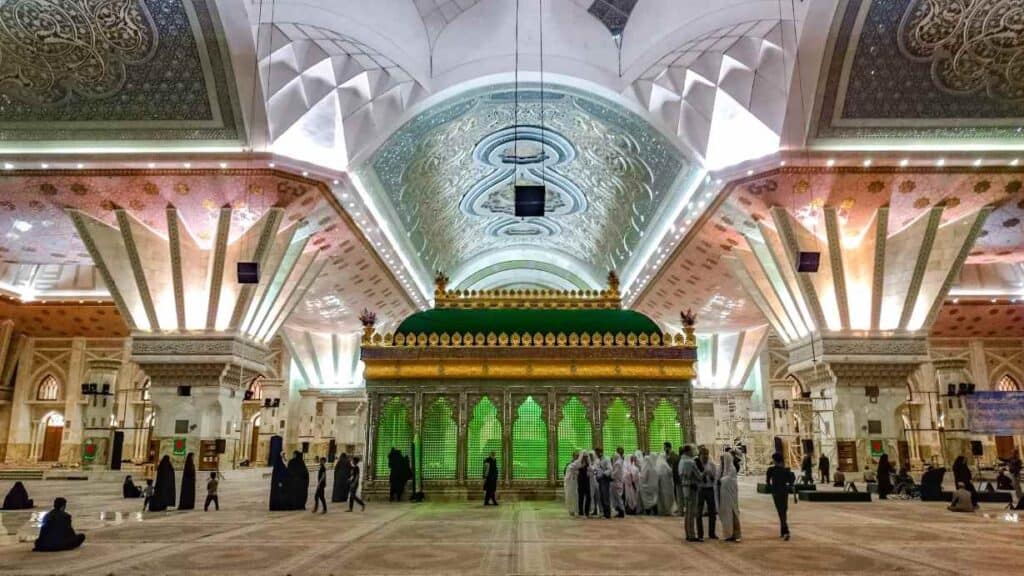
Saint Sarkis Cathedral – the largest Church in Tehran
The largest Church in Tehran was built in Armenian style combined with contemporary architecture during the Pahlavi Shah in Tehran. The church houses a memorial to the Armenian genocide executed by the Ottomans. This church is the residence of the Armenian Archbishop of Iran.
Opening hours: 08:30- 17:30
St. Mary Armenian Church
A church that combines Georgian and Armenian architecture. Before being the St. Sarkis church, it was the seat of the Armenian Archbishop of Iran. A museum adjacent to this church includes books, traditional Armenian women’s dresses, the personal belongings of Archbishop Ardak Manoukian and Armenian works of art.
Opening hours: From 9 am to 2 pm
If you are interested in the Armenian culture of Tehran you can book a tour here.
Haim synagogue – where the Jews found refuge in Iran
Jews live in Iran for more than 2,500 years. They built the synagogue of Haim in Tehran in 1913, and many Jews settled in the church area a century ago. The Haim synagogue welcomed the Polish Jews who were seeking refuge in Iran. Haim is the oldest, but The Yousef Abad, the largest synagogue in Tehran, is the central house of worship for the Jewish community. It stands in the well-known 30th Tir Street.
Opening hours: Has no special opening hours, but should be open from 09:00 to 17:00.
Adrian Fire Temple – the main Zoroastrian praying center in Tehran
There are only around 25,000 Zoroastrians in Iran. Their religion and culture are reminders of the pre-Islamic period of Iran. Zoroastrians pray in “fire temples”, have their own God and belief, and traditional customs for marriage and burial (tower of silence). Yazd is where most Zoroastrians live and where you can learn more about this religion. Zoroastrians, Christians and Jews can openly practice their religion in the Islamic Republic of Iran.
This fire temple in Tehran is in front of the St. Mary Church on Mirzakoochak Khan Street. Next to the temple, a Zoroastrian school, the Firuz Bahram High School welcomes students.
Opening hours: open for Zoroastrians for praying before sunrise and open for public visitors from 9 am
Hope you find the above list of royal palaces, religious sites and museums useful and help you plan your 2-3 day-visit in Tehran.
Here you find an ultimate guide about what other activities you can do in Tehran
How to plan your trip to Iran
Book your flight to Iran: I always use Google Flights, Skyscanner or Wayaway to find the cheapest flight tickets worldwide. To get an extra 10% for your Wayaway Membership Plus program use my discount code VOG
Important: Booking.com and other common platforms do not work due to international restrictions in Iran. The only exemption is Skyscanner, where you can book both your international flight and accommodation in Iran!
Book your accommodation in Iran: Hostelworld.com offers a limited number of hostels. All other services are only available through local travel agencies, like 1st Quest.
Get your visa to Iran: 1st Quest or Tap Persia local companies can easily arrange your insurance for Iran
Book domestic flights, hotels, transfers, bus and train tickets, and local tours, all in one place via 1st Quest travel agency.
Another good thing is that by using my discount code, you get an extra 5% off your bookings: VOG%1stQ
Virtual Private Network (VPN): Use VPNExpress, the fastest and best Virtual Private Network to get access to blocked sites in Iran and to prevent hackers from stealing your private information.
Insurance to Iran: 1st Quest or Tap Persia local companies can arrange for you visa to Iran
Book local guides and local tours: Pirsik is specialized in offering tour guides and local tours in less touristic countries, including Iran.
Tehran is not a city that is easy to like and most tourists quickly head to other more charming places in Iran. However, if you know more about Tehran and you get some insider tips, then you can easily spend 2-3 days. Visit its amazing museums, religious sites, and royal palaces.

